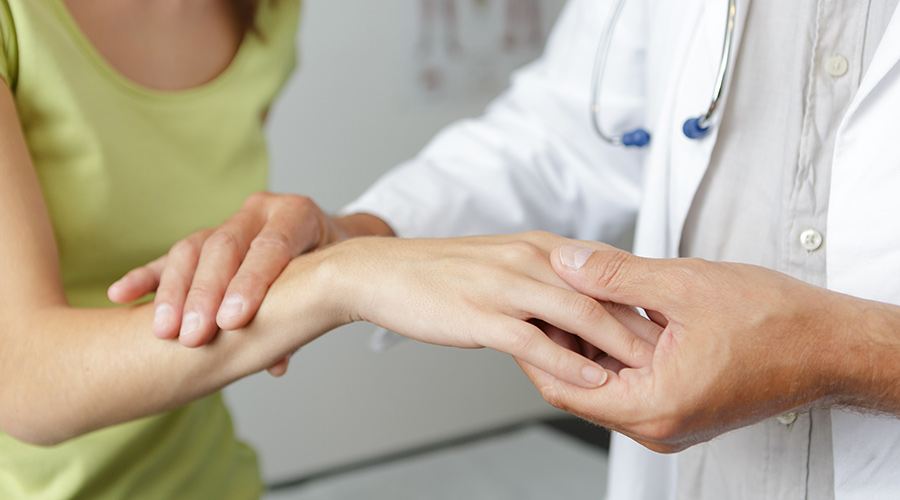
Have you noticed numbness or tingling in your fingers while sleeping or after working long hours? Do you feel the need to shake your hand or rub your palm? You may be experiencing Carpal Tunnel Syndrome (CTS), the most common peripheral neuropathy in the body.
The Carpal Tunnel is a small tunnel on the palm side of the wrist that has ten structures running through it, and one ligament or “roof” of the tunnel, called the transverse carpal ligament. Nine of these structures are tendons that bend the fingers, while the last structure is the median nerve. The median nerve can become entrapped by “increased pressure in the tunnel, median nerve microcirculation injury, median nerve connective tissue compression, and synovial tissue hypertrophy” (Aboonq, 2015). While doctors and researchers previously thought CTS was caused by one’s vocation and work habits, genetic predispositions are now commonly accepted as a contributing factor.
There are two main treatment options for CTS. For mild-moderate cases of CTS, conservative management is recommended. Conservative management of CTS includes a specific combination of neural and tendon gliding, manual techniques, splinting, oral drugs, electrotherapy and injections prescribed by a Doctor and your occupational therapist (del Barrio et. al., 2018). In severe cases, it is often treated surgically. If surgery is indicated, the transverse carpal ligament will be cut to allow for more space for the median nerve and flexor tendons. This can be done endoscopically or with an “open” technique.
The median nerve has the most pressure placed on it in extreme positions of wrist flexion and extension (bending forward and backward). The median nerve has the least amount of pressure when the wrist is neutral. If it is difficult to sleep or work with the wrist neutral, a splint may be indicated.
If you have any questions or concerns, please feel free to consult with our hand therapists at Proactive.
References:
Aboong, M. S. (2015). Pathophysiology of Carpal Tunnel Syndrome. Neurosciences, 20 (1), 4.
del Barrio, S. J., Gracia, E. B., García, C. H., de Miguel, E. E., Moreno, J. T., Marco, S. R., & Laita, L. C. (2018). Conservative treatment in patients with mild to moderate carpal tunnel syndrome: A systematic review. Neurología, (English Edition), 33 (9), 590-601.

